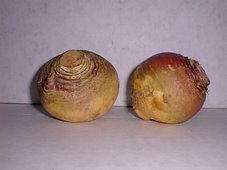 The BBC reports that a "draft UN treaty" will prepare the way for a contingency plan to deal with potential collisions between the earth and giant asteroids. As required by Congress some years ago, NASA has been monitoring 127 "near-earth objects" that pose a risk of entering the earth's atmosphere. The final treaty should be ready for approval by 2009. The draft treaty is the result of intense lobbying by the Association of Space Explorers.
The BBC reports that a "draft UN treaty" will prepare the way for a contingency plan to deal with potential collisions between the earth and giant asteroids. As required by Congress some years ago, NASA has been monitoring 127 "near-earth objects" that pose a risk of entering the earth's atmosphere. The final treaty should be ready for approval by 2009. The draft treaty is the result of intense lobbying by the Association of Space Explorers. ARSI is already preparing to bid on the lucrative government contracts that the treaty will inevitably produce. So far, ARSI physicists have found two possible applications of the rutabaga to the asteroid defense program:
- The extreme macromolecular densities of conventional rutabagas—not to mention genetically-modified hybrids—could offer a major advantage in the intense competition that is sure to come. ARSI physicists estimate that a single rutabaga weighing 1,200 kg/2,640 lbs could generate enough gravitational force (as documented on our website) to deflect an asteroid from a collision course, especially if the rutabaga interception occurs far from earth.
- Used as a projectile, a genetically-modified rutabaga could disintegrate an asteroid up to 4 cubic km. in size. A large rutabaga launched at a speed of 25 km or 15 miles per second could generate forces equal to a 1 megaton nuclear explosion.
Rest assured that your organization is poised to exploit this opportunity to serve humankind in an unprecedented international endeavor.
GRAPHIC: Don Davis, NASA [Note: The object hitting the earth is an asteroid, not a giant rutabaga.]





No comments:
Post a Comment